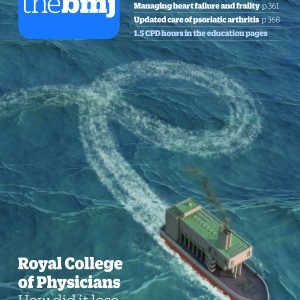
For young people living with diabetes in Quebec, adolescence and young adulthood are periods marked by a significantly higher risk of interruptions in clinical care, hospitalizations and emergency room visits, reveals a study conducted by researchers at the Research Institute of the McGill University Health Centre (RI-MUHC). These alarming findings highlight the need to improve care for youth living with diabetes during this pivotal period of their lives.
The research is published in The Lancet Diabetes & Endocrinology journal.
Type 1 diabetes is an autoimmune disease where the pancreas is unable to produce insulin, a hormone which regulates blood sugar. For young people affected by this pediatric disease—one of the most common and complex—daily insulin injections and regular clinical follow-up are essential, as deterioration in blood sugar control can lead to serious eye or kidney complications, and even death.
“Our results suggest that as currently organized, the care offered to adolescents and young adults living with diabetes is not effective in helping them overcome the obstacles they face during this critical period in their development,” says the first author of the study, Dr. Meranda Nakhla, a Scientist in the Child Health and Human Development Program at the RI-MUHC’s Centre for Outcomes Research and Evaluation.
“Young people’s involvement in their care should be encouraged well before their transition to adult care.”
The study, conducted in collaboration with the Institut national de santé publique du Québec (INSPQ), is the first to examine the relationship between age and diabetes-related hospital care from childhood through early adulthood. The research included individuals with diabetes between the ages of 2 and 22 years who had been followed for at least 18 months.
The team of researchers estimated the risks across eight distinct age groups (<10 years, 10–11 years, 12–13 years, 14–15 years, 16–17 years, 18–19 years, 20–21 years and 22–23 years), taking the under-10s as the reference category. This reference was chosen because at this age, diabetes management is typically overseen by the child’s parents.
Risks increase at an early age
The study’s authors point out that, to date, research has focused on the challenges associated with the transition from pediatric to adult care, which occurs at 18 years old. However, they found that interruptions in care of twelve months or more began at the age of 16 years and worsened after the age of 18. In addition, they found that the risk of diabetes-related hospitalizations and emergency room visits doubled from early adolescence (ages 12–14 years), compared with children under 10, and worsened into young adulthood.
“Normally, regular diabetes clinic visits take place at least every three months for children and adolescents living with type 1 diabetes, as recommended by international diabetes guidelines, and every three to six months for young adults.
“These visits are not only an opportunity to improve blood sugar levels, but also a time to offer young people training and support in the self-management of the disease, and to screen for possible complications,” explains Dr. Nakhla, who is also a pediatric endocrinologist at the Montreal Children’s Hospital of the MUHC and an Associate Professor at McGill University.
The results of the study also indicate that young people from disadvantaged families (identified using the INSPQ Material and social deprivation index 2021) have an increased risk of diabetes-related hospitalizations, emergency room visits and disruptions in care, compared to those less disadvantaged. The researchers hypothesize that transportation difficulties or work obligations may prevent families from attending follow-up appointments.
A risky period for a variety of reasons
During adolescence and young adulthood, young people establish their personal identity, develop their autonomy and make educational and professional choices.
For people with type 1 diabetes, these phases are complicated by the day-to-day demands of disease management and the transition to adulthood, explain the study authors. They also point out that these periods are known to be high-risk periods for negative consequences, due to increased insulin requirements that cause blood glucose levels to rise and young people’s difficulty in juggling all their competing priorities such as social and educational, while trying to manage their diabetes.
“We are not surprised that the risk of acute complications is increased in young adolescents, but the magnitude of this increase compared to childhood and the young age at which this risk begins should alert us. Many efforts are made by hospitals to ease the transition from pediatric to adult care, but more needs to be done.
“New models of care using more creative and flexible strategies for this high-risk population are needed and are needed at a younger age than previously thought,” adds Dr. Nakhla.
More information:
Meranda Nakhla et al, Association of age with gaps in diabetes-related care and hospitalisations from childhood to young adulthood in Quebec, Canada: a cohort study, The Lancet Diabetes & Endocrinology (2024). DOI: 10.1016/S2213-8587(24)00186-4
Citation:
Study shows adolescence and young adulthood are risky periods for those living with diabetes (2024, October 8)
retrieved 8 October 2024
from https://medicalxpress.com/news/2024-10-adolescence-young-adulthood-risky-periods.html
This document is subject to copyright. Apart from any fair dealing for the purpose of private study or research, no
part may be reproduced without the written permission. The content is provided for information purposes only.








